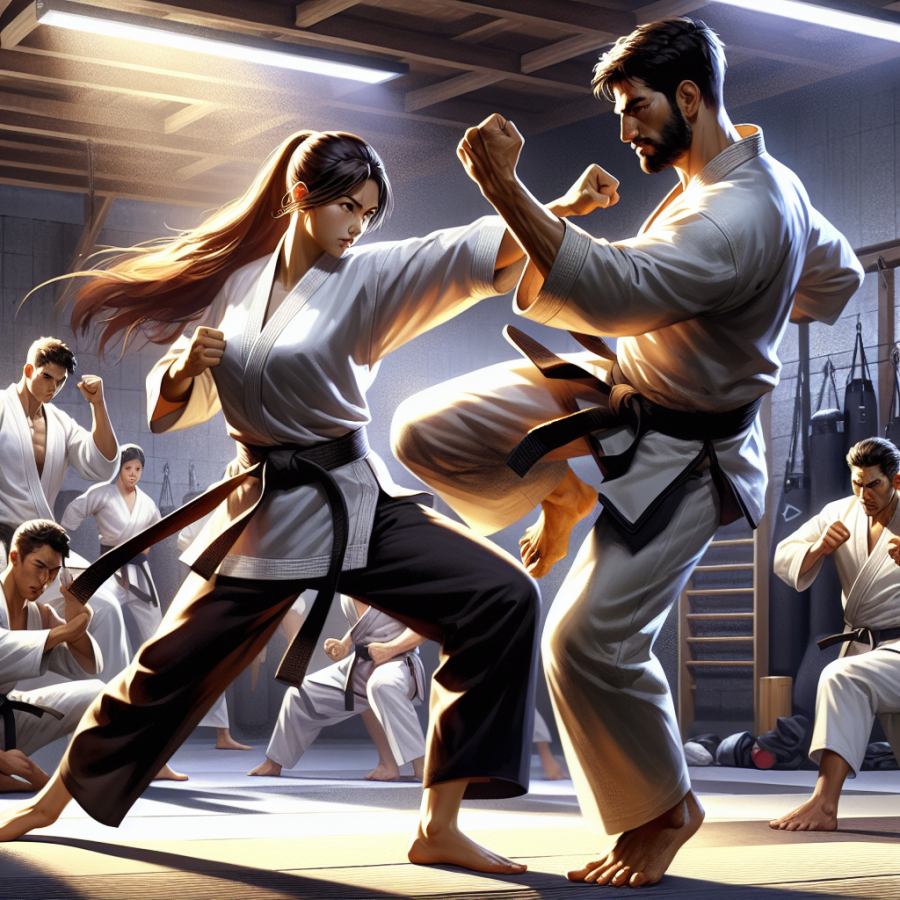Exploring the Blend of Techniques in Chun Kuk Do
Chun Kuk Do, developed by the martial arts legend Chuck Norris, is an eclectic martial arts system that combines elements from a variety of fighting styles. As a modern martial art with deep traditional roots, Chun Kuk Do encapsulates Norris's extensive experience across various disciplines. The name itself translates to "The Universal Way," highlighting its inclusive and comprehensive nature.
One of the most distinctive aspects of Chun Kuk Do is the blend of techniques it incorporates from different martial arts. Notably, the style embeds the sharp striking techniques of Korean Tang Soo Do, which was Norris's first and one of his base systems. These striking techniques are characterized by their power and precision, with an emphasis on high kicks and spinning kicks that demonstrate both agility and control.
Moreover, Chun Kuk Do integrates the pragmatic and adaptive techniques of Brazilian Jiu-Jitsu. The ground-fighting and grappling maneuvers of Brazilian Jiu-Jitsu enrich the self-defense repertoire of Chun Kuk Do practitioners, who learn to neutralize threats on the ground effectively. This seamless merging of stand-up fighting with ground techniques reflects the art's holistic approach to combat situations.
In its striking arsenal, Chun Kuk Do also adopts the boxing techniques that Chuck Norris honed during his competitive fighting days. The jab, cross, hook, and uppercut punches, along with sophisticated footwork and head movement, improve the hand-striking ability of practitioners and train them to maintain defensive guard while delivering powerful blows.
Another martial art that significantly contributes to Chun Kuk Do's methodology is Judo. Judo's throws and takedowns complement the standing and ground aspects of the system, teaching practitioners to off-balance and control opponents using leverage rather than brute strength. With Judo's influence, Chun Kuk Do students learn to transition smoothly from striking to grappling when needed.
Karate principles are embedded within the discipline as well, notably the katas (or forms), promoting discipline, precision, and the sequential mastery of techniques. These forms not only serve as a physical drill but also help in focusing the mind and embodying the martial art's philosophy.
Furthermore, Chun Kuk Do does not overlook the importance of weapon training, drawing from Filipino martial arts like Arnis and Kali, which emphasize stick and knife techniques. This training educates students in both the use and defense against weapons, enhancing their understanding of range and timing, which are crucial in real-world defense scenarios.
Read also:
French Cricket: A Timeless Game of Garden Sport
The Evolution of Chun Kuk Do from Traditional Martial Arts Practices
Chun Kuk Do, known for its "Universal Way" philosophy, is a relatively modern martial art system founded by martial arts legend Chuck Norris. This multifaceted discipline is a reflection of Norris's extensive experience in various martial arts forms, incorporating elements from traditional practices such as Tang Soo Do, Taekwondo, and Karate, among others. The evolution of Chun Kuk Do represents a blending of time-honored martial techniques with modern self-defense strategies, resulting in a well-rounded and adaptive martial arts style.
At its core, Chun Kuk Do maintains a strong connection with its traditional roots. The art draws heavily from Norris's original training in Tang Soo Do, a Korean martial art that itself is a hybrid of Chinese and Korean fighting styles. This influence is evident in the stances, strikes, and blocks taught in Chun Kuk Do, which bear resemblance to the disciplined forms of Tang Soo Do. Moreover, the inclusion of kata or forms – a series of predefined movements practiced as a continuous routine – is another aspect where tradition plays a significant role. Through katas, students of Chun Kuk Do connect with the historical practices of martial arts and develop precision, power, and fluidity in their techniques.
However, Norris's vision extended beyond traditional confines. Having also trained in Brazilian jiu-jitsu and judo, he saw the practical benefits of grappling and groundwork, which were not typically emphasized in traditional stand-up fighting styles. Hence, Chun Kuk Do integrates these components, offering a more comprehensive self-defense system that addresses the full spectrum of combat situations, from punches and kicks to locks and throws.
Another area where Chun Kuk Do diverges from traditional arts is its approach to adaptiveness and evolution. While traditional systems often adhere to a rigid set of techniques and philosophies, Chun Kuk Do encourages continuous learning and adaptation. This forward-thinking approach allows practitioners not only to preserve the integrity of the martial art but also to incorporate new and effective strategies as they become relevant in the ever-changing landscape of martial arts and self-defense.
Furthermore, the philosophy of Chun Kuk Do underscores Norris's belief in the transformative power of martial arts. The Code of Ethics, a notable aspect of Chun Kuk Do, features principles such as humility, respect, loyalty, and a commitment to improvement. These principles aim to build character and instill positive values in students, much like traditional martial arts which often focus on moral development alongside physical training.




